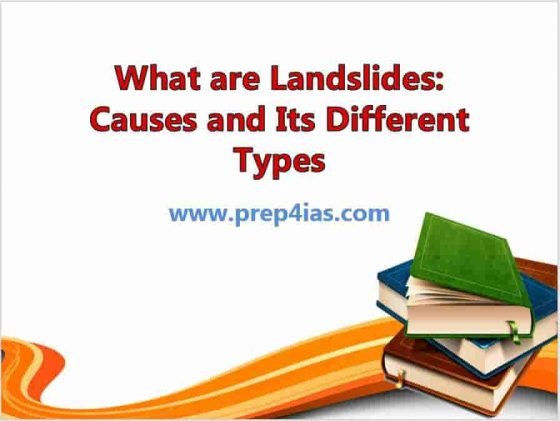In this article, we will see what are landslides? How it is caused and its different types. You might have heard about this geographical phenomenon occurring in many parts of the world at certain times, mostly in the mountainous or hilly regions and terrains. Although it is mostly categorized as natural phenomenon but now a days it can also be due to number of anthropological activities.
In the past, land sliding was very frequent but our recent technological advancements has reduced this frequency a lot. Hence reducing the impact on peoples and livestock living near by the affected regions. Here we will see in detail about landslides, its causes and the most frequently observed different types of landslides.
What are Landslides
Landslides are either sudden or gradual movement of rocks, debris, soils or earth moving down a slope steadily or rapidly causing moderate to significant impact on its surroundings. It can be caused by multiple reasons depending on the geographical area and its climatic conditions but it's mostly prevalent on mountainous and high rainfall regions.

What are Landslides: Causes and Its Different Types
Also Read: Classification of Cultural Regions in India | UPSC IAS IPS IFS
Landslides can occur in conjunction with earthquakes, volcanic eruptions, floods and prolonged heavy rainfall. Cloud bursting in hilly or mountainous regions can also cause landslides resulting into the blockage of roads and other navigations.
Causes
Few major causes of the landslides are:-
- Disturbance in the natural stability of the material over the slope.
- Constant or heavy rainfall in a region for longer duration of time.
- High speed of wind over the slopes.
- Abrupt or sudden movement of rocks, earth or debris due to earthquakes or volcanic eruptions.
- Disturbance by human activities like construction of roads and buildings.
- Snow melting in summer seasons
- Change in Water Level
- Stream Erosion
Types of Landslides
According to D.J Varnes , there are ten different types of landslides:-
- Falls: It is the sudden detachment and movement of materials from the steep slopes or cliffs. The movement can be a free-fall, bouncing or rolling type.
- Flows: This type of landslide includes mass movement of debris, avalanche, lahar and mudflow in the form of a fluid.
- Creep: It is slow, steady, downslope movement of materials like soil and rock under the gravity. It is often indicated by curved tree trunks and bent fences or retaining walls.
- Debris Flow: It is a type of fast moving landslide that flows and moves very quickly destroying or damaging all the property and livestock in its path. This type of landslide is mostly prevalent in United States.
- Debris Avalanche: It is a type of landslide that includes mass movement of debris from high to extremely high speed to long distances.
- Lahar: It is an Indonesian term for describing the hot and cold mixture of water and rock fragments that flows down the slopes of a volcano and end up entering in river valleys.
- Mudflow: It is a type of landslide that occurs due to rapidly flowing mass of wet material that contains atleast 50% sand, silt and clay sized particles.
- Lateral Spreads: It can occur on very gentle slopes and results in nearly horizontal movement of earth materials. The material movement is usually sideways or laterally.
- Slides: It is downward movement of material that occurs along a distinctive rupture or slip surface. The slip surface could be deeper than the other types of landslides. Basically there are two major type of slides - rotational slides and translational slides.
- Topple: It is a mass movement of rock, earth or debris that tilts or rotates forward, bounces, falls or roll down the slope.
